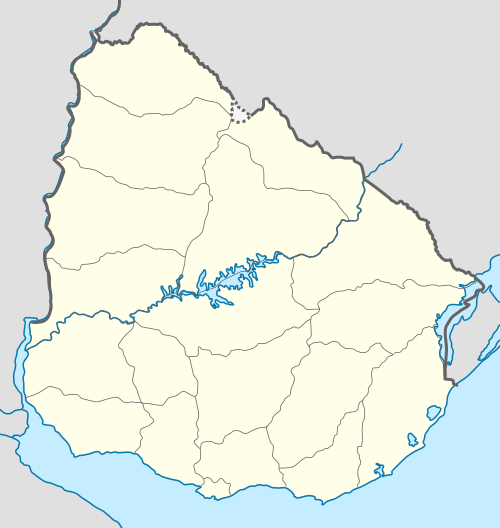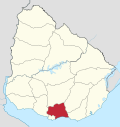Las Toscas, Canelones
Las Toscas is a resort of the Costa de Oro in the Canelones Department of southern Uruguay.
Las Toscas | |
|---|---|
Resort of the Costa de Oro | |
 Las Toscas Location in Uruguay | |
| Coordinates: 34°46′0″S 55°44′0″W | |
| Country | |
| Department | Canelones Department |
| Population (2011) | |
| • Total | 3,146 |
| Time zone | UTC -3 |
| Postal code | 16002 |
| Dial plan | +598 437 (+5 digits) |
Location
The resort is located on the 47th km of Ruta Interbalnearia between Atlántida to the west and Parque del Plata to the east.
History
Today, Las Toscas is merged with Atlántida to the west and Parque del Plata to the east, but in the creation of these locations, during the first decades of the 20th century, it gave the name to the whole zone. Atlántida's train station wal also named Las Toscas, and was, with Ruta 11, the only way to get into de area before the construction of the Ruta Interbalnearia.
It was at Las Toscas where the laborious task, developed by various private societies, of foresting the coast of the Río de la Plata began. The success of this task is because of Mario Ferreira, whose name is taken by the main street of the resort.
The first lands were sold between 1911 and 1914, and the first building was made in 1946.
Population
The population of Las Toscas has grown considerably since 1990. In 2011 Las Toscas had a population of 3,146.[1][2]
| Year | Population |
|---|---|
| 1963 | 594 |
| 1975 | 899 |
| 1985 | 1,093 |
| 1996 | 1,793 |
| 2004 | 2,222 |
| 2011 | 3,146 |
Source: Instituto Nacional de Estadística de Uruguay[3]
References
- "Censos 2011 Cuadros Canelones". INE. 2012. Archived from the original on 10 October 2012. Retrieved 25 August 2012.
- "Censos 2011 Canelones". INE. 2012. Archived from the original on 7 September 2012. Retrieved 28 August 2012.
- "1963–1996 Statistics / L". Instituto Nacional de Estadística de Uruguay. 2004. Archived from the original (DOC) on 29 November 2011. Retrieved 3 July 2011.
External links
- INE map of Villa Argentina, Atlántida, Estación Atlántida, Las Toscas, City Golf, and Fortin de Santa Rosa
- Video with images of dunes in Las Toscas
